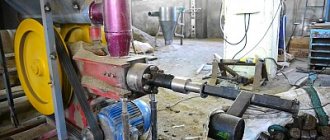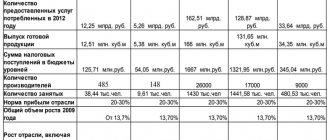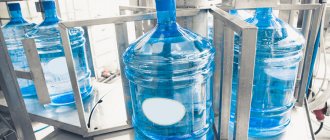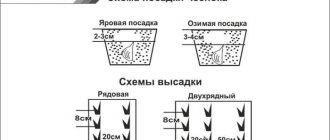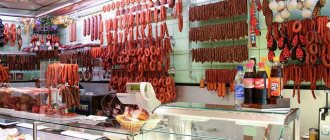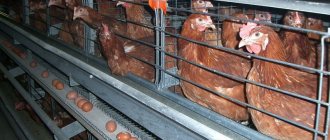Pellets are sawdust granules, for the production of which waste from the forest industry is used. The production of pellets from sawdust is even more relevant in the context of the general orientation towards waste-free production. Sawmills and sawmills are a source of recyclable materials such as shavings, sawdust, and sometimes large wood trimmings that cannot be used in the main production. This waste subsequently becomes the main resource for the production of wood pellets and blocks.
Brief business analysis: Costs of organizing a business: 1.5 – 2 million rubles Relevant for cities with a population: no restrictions Situation in the industry: high competition Difficulty of organizing a business: 2/5 Payback: 10 – 12 months
How much money do you need to start a pellet production?
Investments in starting a business include:
- Mini (drying, crushing, pressing, cooling, transportation) - RUB 1,500,000.
- Truck (can be used) - 700,000 rubles.
- Arrangement of premises (industrial and office) - RUB 300,000.
- Tools and other production equipment (racks, carts) - RUB 150,000.
- Advertising - 50,000 rubles.
- Business registration and other organizational expenses - RUB 100,000.
Total - 2,800,000 rubles.
Marketing plan
The difficult situation with providing heat supply in remote settlements, as well as in most European countries, makes the demand for fuel pellets relevant. Statistics show that the number of boilers operating on pellets is growing from year to year. The main consumers of the products are cottage communities and apartment buildings heated by coal boiler houses. Heating with pellets is 4-5 times more effective than heating with coal. Today, the only cheaper option for pellets is gas, but it is not supplied to all residential complexes. In Europe, more than 3 million private homes operate on pellet boilers. In total, in European countries there are more than 30 million boilers and fireplaces for which fuel pellets are suitable. This is a huge market! According to the European Union directive, by 2020 the share of renewable energy sources in electricity generation will increase to 20%. Where else but in Russia to produce fuel pellets? The main consumer (Europe) is nearby; timber reserves are the largest in the world (more than 700 million hectares of forests). The main thing in the matter is to decide on potential sales channels for products and locate production as close as possible to the raw material base (wood processors). Export can be established with the support of regional authorities. Today, in every region there are special organizations that help small and medium-sized businesses enter the foreign market. Another option is to install pellet boilers (you can even do it for free) at municipal institutions and conclude an agreement for the supply of pellets for heating buildings and structures (schools, hospitals, kindergartens and other social facilities).
Download a business plan for pellet production from our partners, with a quality guarantee.
How to choose the right room
For the production of fuel pellets, a room of 150 - 200 m2 with a ceiling height of at least 10 m is required. It will house a workshop and a warehouse for storing products. You may also need utility rooms and rooms: for eating, a locker room, a toilet, a shower, etc.
A mandatory requirement for the premises is the presence of a 380 V electrical network.
It is also necessary to take into account that for further transportation the products will be loaded into cars. Therefore, there must be an unobstructed access and ramp to the warehouse or workshop.
“To reduce the cost of transporting raw materials, it is better to choose premises near the raw material base. This will reduce the cost of production, which will attract interested buyers.”
The finishing materials of the workshop and warehouse must be fireproof, and fire detectors must be installed in each room.
Financial plan
Let's move on to calculating economic efficiency indicators for the production of fuel pellets. Production costs for 1 ton
- The cost of raw materials is 750 rubles.
- Electricity - 450 rub.
- Salary + insurance contributions - 400 rubles.
- Operating costs - 100 rubles.
- Depreciation of equipment - 240 rubles.
- Packaging and transportation of finished products - 120 rubles.
- Other expenses - 100 rubles.
The total cost of 1 ton of finished products is 2160 rubles.
Premises requirements
To produce products, it is recommended to choose a spacious workshop in which you can install all the necessary equipment. Its area should be about 150 sq.m, and its height should be 10 meters. You should also take care of all communications and warehouses in which raw materials and finished products will be stored.
The territory on which the enterprise is located should have convenient access roads, this will speed up the process of unloading and loading. It is also recommended to fence it and place it under guard.
How much can you earn from producing pellets?
The wholesale price of pellets, according to business plan calculations, ranges from 5 to 7 thousand rubles per ton. The profit from the sale of one ton will be equal to 3 - 5 thousand rubles. The production capacity of the mini-factory allows the monthly production of about 60 tons of finished products. It follows that if only 70% of the products produced are sold, the monthly profit of the enterprise will be at least 150 thousand rubles. The return on investment in the business occurs after 20 - 25 months of work.
We recommend downloading a business plan for pellet production from our partners, with a quality guarantee. This is a full-fledged, ready-made project that you will not find in the public domain. Contents of the business plan: 1. Confidentiality 2. Summary 3. Stages of project implementation 4. Characteristics of the object 5. Marketing plan 6. Technical and economic data of the equipment 7. Financial plan 8. Risk assessment 9. Financial and economic justification of investments 10. Conclusions
Making pellets yourself
Making pellets at home is a profitable business. Some parts and machines you can make yourself, others will have to be purchased. Homemade pellet production will require:
- Crusher. This process can be skipped if the product to be processed is very small to begin with.
- Dryer in the form of a drum. Made from large diameter barrels. Material: iron.
- The raw material is then turned into small sawdust, almost flour.
- Pellet press or granulator for making pellets. It is recommended to use a flat matrix at home.
How to make a crusher
To make this machine you will need the following materials:
- Circular saws - 15-25 pieces.
- Motor power: from 5 l/s.
- A pulley (suitable from a VAZ generator), a tight belt for it.
- Bearings.
- To make a metal pipe frame. A few pieces are enough.
- Sheets of metal for the bunker.
Sawdust dryer
You can make a homemade dryer using large metal barrels with a capacity of 200 liters. Blades are welded onto them to move the sawdust.
It is important that the temperature and air supply are maintained. It all depends on the size and even the time of year.
How to make a screw granulator yourself
As in every machine of this type, a matrix element is a mandatory element. It is shaped like a disk with holes, like in a meat grinder.
The next unit is the screw shaft. The sequence is as follows: a matrix is made under the finished screw. The screw and die are then “packed” into a housing or sleeve. After assembling this unit, a motor with a gearbox and a hopper are installed.
Manufacturing of Flat Die Granulator
It is recommended to make pellet press granulators with a flat matrix. Sawdust is poured onto the disk from above. Holes are made on it. Sawdust gets into them and is pressed with rollers. They move on disks. The compressed pellets fall down into a pre-prepared container. It is advisable to buy the engine and matrix ready-made. Although they are made independently. In this case, the design is assumed to be such that the pellets are of the desired uniform size.
- The drive for the granulator is an electric motor, the power of which must be at least 15 kW.
- The matrix rotation frequency ranges from 60-100 rpm. The permissible circumference is 35-50 mm. A hole equal to the diameter of the gearbox shaft is drilled in the middle of the disk.
- A matrix is attached to a vertical or horizontal shaft. It is fixed at right angles to the gearbox.
Step-by-step plan for starting a pellet production business
Opening any type of business primarily involves drawing up a business plan and researching the market for your products. Subsequent stages include the following steps:
- Selection and preparation of documents for starting a business activity – individual entrepreneur, LLC.
- Visiting the tax office to register the company.
- Search for future consumers.
- Searching for the necessary space to accommodate production
- Concluding a rental agreement for premises.
- Purchase of equipment.
- Hiring.
- Opening an enterprise.
Particular attention should be paid to drawing up a business plan and analyzing the chosen niche, competitors and finding ways to sell finished products.
What equipment is needed for the production of pellets
Before purchasing equipment, it is important to determine the capacity of future production. The equipment is divided into two types - granulators and industrial lines. In turn, there are three types of granulators, the choice of which depends on your needs and financial component:
- Granulators based on an electric motor, approximate cost 600,000 rubles.
- Granulators operating from a power take-off shaft - 400,000 - 500,000 rubles.
- Granulators based on a diesel engine - 300,000 - 400,000 rubles.
Production lines are more expensive and include equipment such as:
- Dryer.
- Crusher.
- Press.
- Conveyor.
- Bunker.
- Heat generator.
- Packing machine.
- The total cost of such a line varies from 1 to 2.5 million rubles.
What documents are needed to open a business?
The selection of documents depends on the choice of production: if the production is not large, then it is enough to prepare documents for opening an individual entrepreneur, but if you plan to open your own pellet production plant, then you need to register a limited liability company. The list of documents includes:
- Permitting documentation.
- Documents for opening an individual entrepreneur or LLC.
- Agreement with the supplier of raw materials.
- Space lease agreement.
- Agreement with the consumer of your products.
Pellet production technology
Pellets are made from wood waste and grain industry waste. The resulting waste is poured into a chopping machine, where sawdust up to 30 millimeters in size is obtained. Next, these sawdust enter the dryer and grinder, and the output is fractions of 1 millimeter in size. After this, the finished fractions are fed through a conveyor into a press, where briquettes or so-called pellets are formed under pressure. The advantages of this type of business are that the production is practically waste-free; the material that remains during the manufacturing process can be reused.
( 2 ratings, average: 4.00 out of 5)
Loading…
Similar business ideas:
- TOP 30 business ideas with minimal investment
- TOP 30 business ideas without investment
- How to make money renting a car as a taxi: the most...
- Business idea: fuel-free heating
What are pellets?
Pellets
are a granular type of solid fuel, cylindrical in shape, made from compressed waste from agricultural production and the woodworking industry. The main materials for the manufacture of fuel pellets are:
- sawdust, wood chips, bark, slabs of coniferous and deciduous (the best option) wood species;
- peat;
- sunflower husks (the most common solution), rapeseed (the best option), straw of various grain crops, corn, husks, cake and much more;
- charcoal;
- household waste.
The base binder is a substance of plant origin - lignin, a natural polymer contained in almost any plant, capable of being plasticized during granulation under the influence of a sufficiently high operating temperature.


